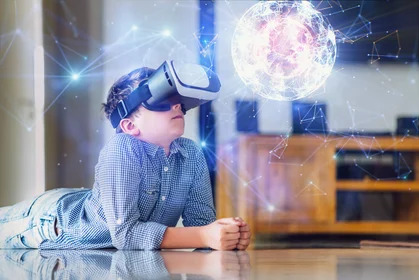A recent article in Annals of Medicine highlights the efficiency of virtual reality (VR) in fostering attention orientation in children. The study, which involved both children with ADHD and neurotypical children, demonstrated strong acceptance and interest in the VR tool, showing its potential as a therapeutic instrument for ADHD.
“Immersive VR could be a practical tool for supporting ADHD children in learning to manage their symptoms better,” as stated by the authors.
Nineteen children (aged 7-11), including nine with ADHD, participated in a one-session trial of a VR application called VADDAI. The VR environment, designed to resemble a comfortable living room, involved children searching for target objects on a virtual blackboard. The difficulty of the task increased as the children progressed. The study team used technology acceptance surveys, subjective satisfaction scales, and behavioral observations to evaluate the participants.
The results showed that both children with ADHD and neurotypical children were highly satisfied with the VR experience. Investigators found no major differences between the two groups regarding task completion time, fatigue levels, or overall satisfaction. However, children with ADHD were more prone to commission errors (choosing the wrong target), consistent with attention problems typical in these children. Despite this, both groups demonstrated similar involvement and performance, with no significant usability issues.
Although one child in the neurotypical group experienced cybersickness and had to interrupt the session, most children reported only mild symptoms, such as dizziness or eye strain, which are typical of immersive VR experiences. These minor side effects did not significantly affect the overall success of the study.
The findings affirm the potential of VR as a tool for improving attention in children with ADHD. The VR environment, being game-based and immersive, appeared to engage the children, suggesting that it could positively influence motivation and treatment adherence when used in ADHD interventions.
“These results align with clinical findings that suggest children with ADHD often benefit from structured and interactive environments that provide immediate feedback and reinforce sustained attention and behavioral control,” the authors concluded. “This study is a preliminary investigation of the feasibility of applying VR technology to support clinicians in treating children with ADHD.”
References
Bernardelli, G., et al. Ann Med. 2025;57(1):2548387. doi:10.1080/07853890.2025.2548387
Quelle:
https://www.docwirenews.com/post/immersive-vr-boosts-attention-and-engagement-in-children-with-adhd






